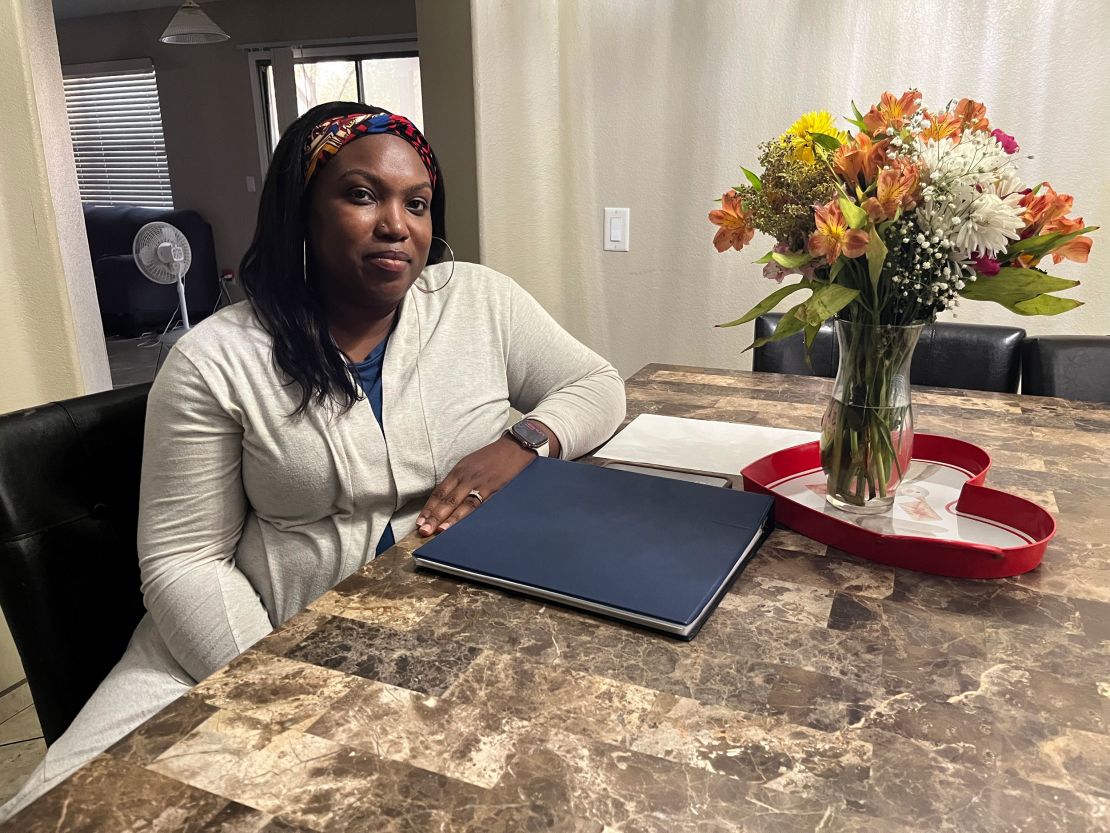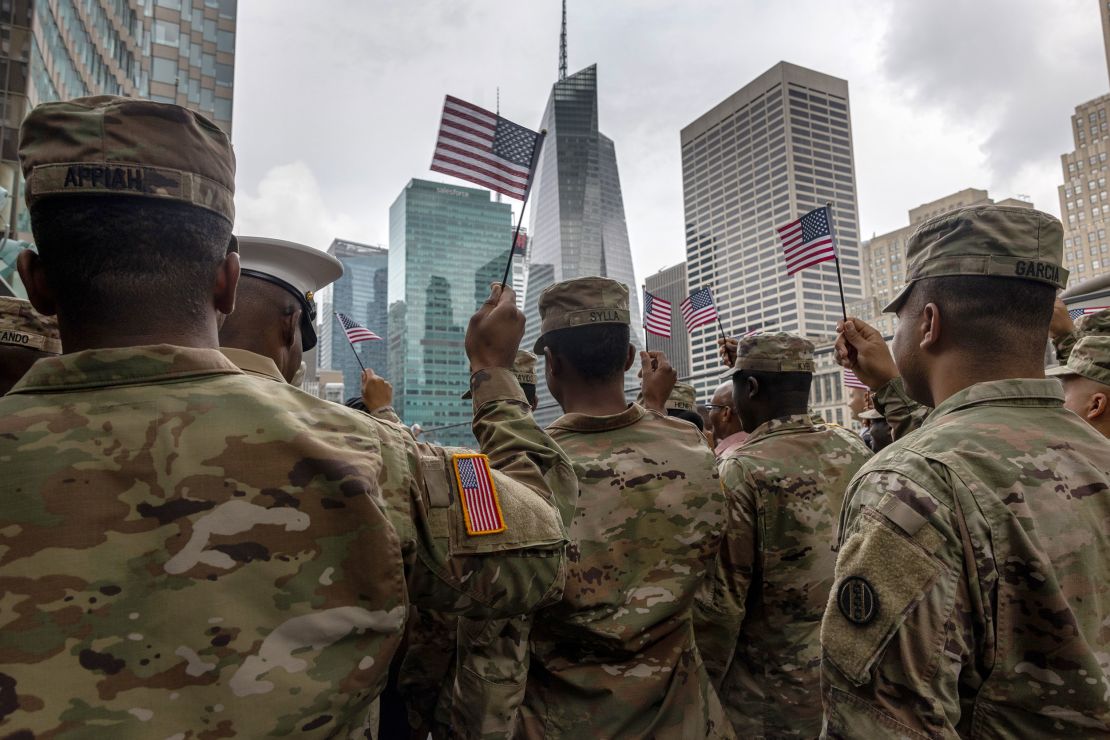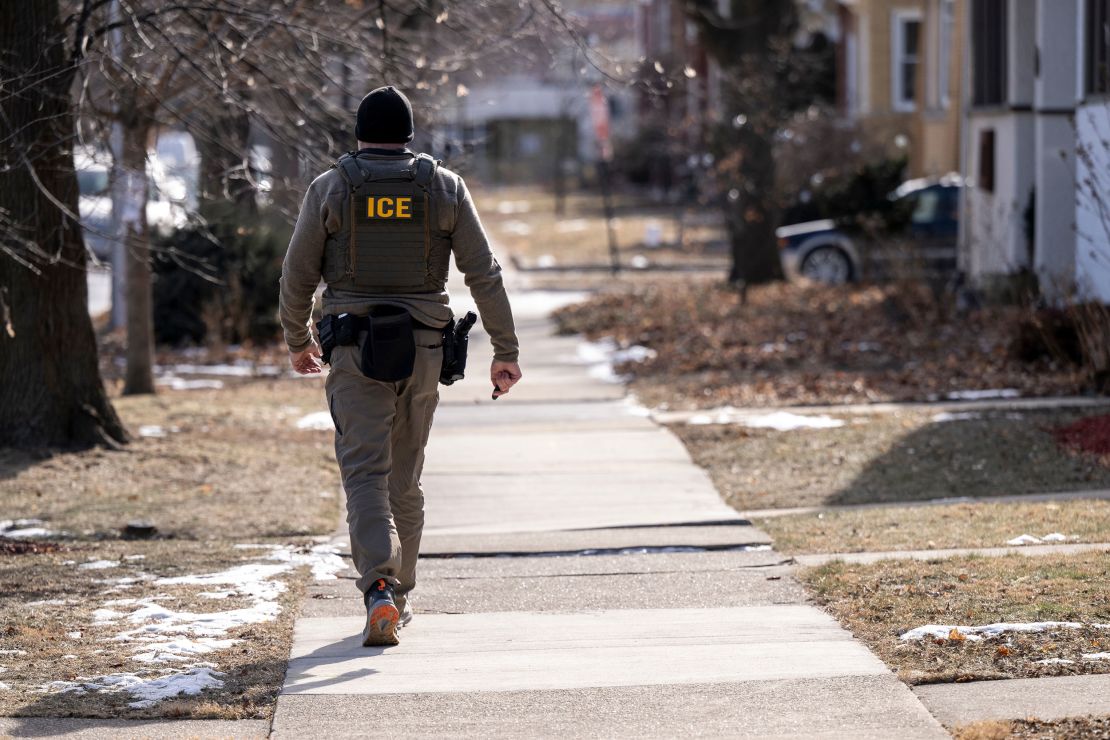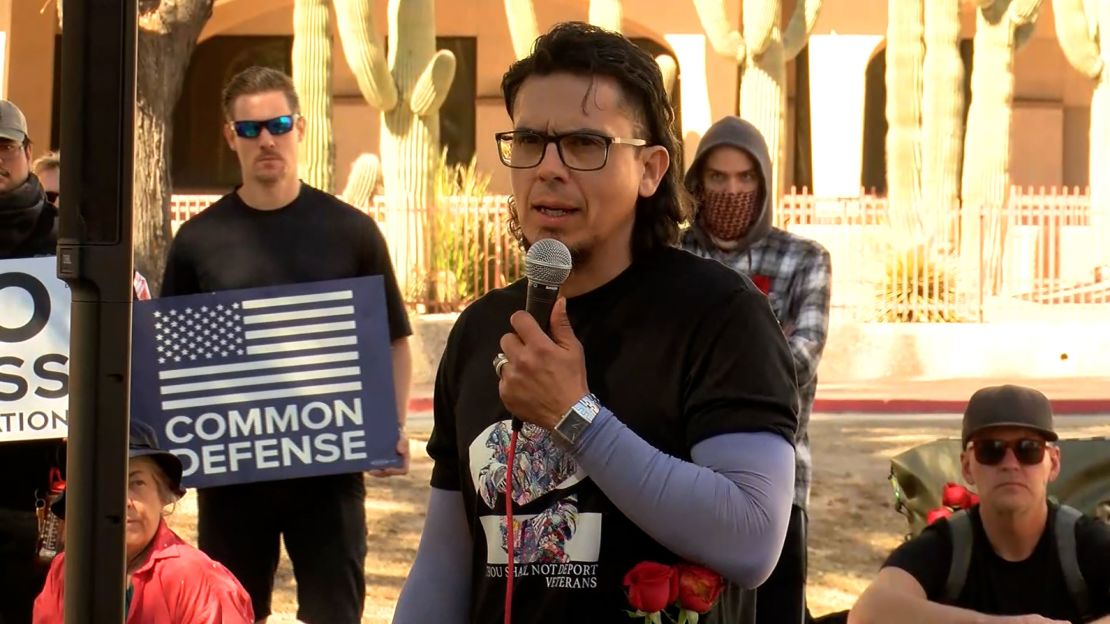
DHS said in 2016 it was not moving to deport a convicted Army vet. He’s spent most of Trump’s new term in ICE custody
The letter had been a welcome assurance some six months before President Donald Trump’s 2016 election that the Department of Homeland Security and its Immigration and Customs Enforcement bureau didn’t intend to send the US Army veteran back to his native Trinidad and Tobago, even after he pleaded guilty and served prison time for felony conspiracy to distribute cocaine as part of a sophisticated, big-money cocaine ring.
Since Parris had come to the US as a child in 1997, he had been a lawful permanent resident. As a soldier, he sought full citizenship, a benefit military recruiters often tout to entice foreigners. But his deployments, his wife told CNN, prevented him from seeing the process through, another common obstacle noncitizen service members face.
During his years in the Army, Parris was among the first teams sent overseas in Operation Iraqi Freedom, then returned to Iraq two years later, according to his wife and military records. He earned awards, including a service medal for the global war on terrorism and one for good conduct.
Parris, who has suffered from post-traumatic stress disorder, figured immigration officials’ letter in 2016 – and his green card renewal the following year – meant he “was given full clearance to basically live life as normal,” said his wife, Tanisha Hartwell-Parris, an American citizen.
But two days after Trump retook the White House this year on promises of tightening America’s borders and expelling violent criminals, Parris found himself at a red light in his Arizona neighborhood, surrounded by unmarked SUVs.
It was the feds.
Parris, now 45, called his wife.
“ICE is about to detain me,” he told her, she recalled in February to CNN’s Victor Blackwell.
Now, more than two months later, the couple is still waiting to understand why an agency that had explicitly stated it was not pursuing deportation proceedings against Parris still has him in custody and is trying to remove him from the country he served on the battlefield – a circumstance scores of veterans reportedly have faced in recent years.
‘We pay our debt … then get exiled’
The documents ICE has provided in support of Parris’ deportation stem from the 2011 federal drug case, his wife told CNN: Parris was charged along with at least 13 others as part of a trafficking scheme that ferried cocaine cross-country on private jets and returned with huge sums of cash, court records show.
After he served his time in the case, Parris learned of DHS’ and ICE’s letter of no interest to the detention center holding him, saying the government was lifting his detainer and was not moving to deport him. “After further review, DHS has determined that he/she is not amenable to deportation or exclusion proceedings,” the letter read.
Now, his wife told CNN, it seems Parris has been swept up in the new Republican administration’s immigration crackdown, which also has targeted academics at elite universities, alleged gang members and ordinary parents of US citizens.

“We still don’t know how he got caught up in this” after several years of thinking he was in the clear, Hartwell-Parris said. “There’s still nothing that they’re presenting that would make sense.”
DHS did not respond to CNN’s requests for comment about Parris’ detainment. The department’s ICE division told CNN in February it couldn’t share information about the case, saying there was no signed privacy waiver on file.
“My goal is to arrest as many public safety and national security threats as possible and move on to the other priorities,” White House border czar Tom Homan said in January. “We’re prioritizing criminal aliens.”
But Parris and military veterans, Hartwell-Parris said, “are not the people who you’re hearing about on TV. These are not murderers and rapists, everything that’s being said about immigrants.”
“It’s no secret that veterans get in trouble with the law,” Navy veteran Alex Murillo, who also has faced deportation, told CNN. “What the difference is with us is after we serve our time, after we pay our debt to society, then we get exiled. We never get to see our family again.”
Military recruiters’ promise of citizenship
Military service is one way immigrants can be naturalized under the Immigration and Nationality Act. Eligible service members can apply through the standard form, with some requirements waived, and many military installations offer a liaison to help with the process, according to US Citizenship and Immigration Services.
Applicants still need to meet requirements, such as having good moral character and being a lawful permanent resident at the time of their naturalization interview.
But there’s a difference between being eligible for the benefit and actually receiving it, said Danitza James, who chairs a subcommittee on deported veterans for the League of United Latin American Citizens, the nation’s oldest Hispanic civil rights group.

Military recruiters tell noncitizens they can apply for naturalization and get their citizenship by serving. But, James said, “that is it.”
“There is nothing that is signed. It’s not in our military orders; it’s not in our contract. There is nothing abiding the military to deliver on that promise, and that’s where the challenges begin,” she said.
James went through the process herself: She was 16 when she came to the United States from Mexico and, as a green card holder, did two combat tours in Iraq, she said. She tried to get her citizenship through her military service, but she kept missing immigration appointments and naturalization ceremonies because of redeployments.
“The mission always takes priority,” James said.
That’s much like what happened to Parris, his wife said – and to others, like Murillo. When the jet mechanic was on active duty in Israel in the early 2000s, his father called from the United States to tell him he had a citizenship interview coming up, he said.
“Dad, I’m serving overseas,” Murillo recalled replying. “I’m with my squadron. My command is going to take care of that.”
“Yeah, and they never did,” he told CNN. “They never did.”
Murillo later went to prison on a nonviolent cannabis change, he said, and soon after he’d done his time, the Democratic Obama administration deported him in late 2011 to Mexico, where he hadn’t been since he was a baby. He spoke no Spanish.
ICE can’t keep track of vets it deports, GAO report says
Scores of veterans have been held in ICE detention or faced deportation proceedings, a 2019 Government Accountability Office report found. But the exact number isn’t clear, it said, and ICE itself fails to keep track. At least 239 deported US veterans live across 34 countries, according to the nonprofit National Immigration Forum, which also counts about 94,000 immigrant veterans who aren’t naturalized.
And while ICE has special policies for handling veterans’ cases – requiring extra layers of documentation and management approval – it doesn’t consistently adhere to them, nor does it keep complete data on veterans who are in removal proceedings or deported, the report concluded.
ICE “does not know exactly how many veterans have been placed in removal proceedings or removed, or if their cases have been handled according to ICE’s policies,” the report stated.

The GAO also found some veterans were removed who may not have received the level of review and approval ICE’s own policies deem appropriate.
DHS at the time said it concurred with the GAO’s recommendations that it consistently implement its own policies and maintain data on veterans and would take action to address them, the GAO report states.
“The Department is pleased to note GAO’s acknowledgement that US Immigration and Customs Enforcement (ICE) recognizes noncitizen veterans warrant special consideration in the event that they become subject to immigration enforcement and removal from the United States,” the agency’s response to the report reads. DHS “and ICE are focused on smart and effective enforcement of US immigration laws.”
The agency did not respond to CNN for this story about whether it has addressed the report’s recommendations.
Bringing deported vets back to the US
For veterans who get deported, trying to return to the US often isn’t the only challenge. Hector Barajas was honorably discharged in 2001 from the US Army but struggled to adjust to civilian life, he said, and soon pleaded guilty to illegally discharging a firearm and spent two years in prison.

He then was deported and lived the next 14 years in Mexico while working to secure US citizenship. For much of his time in Tijuana, Barajas also ran the Deported Veterans Support House, or “The Bunker.” Barajas is the first known deported veteran to be naturalized as a US citizen, the American Civil Liberties Union has said.
But even after he was welcomed back to the United States in 2018, Barajas struggled to find housing. For a while, he slept in his car in a parking lot, he told CNN. He eventually found a job as a security guard, but his applications for rental housing still got denied because he had no credit history.
“For some of us, the nightmare really isn’t over,” he said, “but it’s just nice to be home.”
Murillo, the Navy veteran, spent 11 years in Mexico after his deportation. Then in 2021, Democratic President Joe Biden signed an executive order establishing a program that identifies current and former military members and their relatives who were deported to ensure they receive service benefits.
Since then, a coalition of nonprofits, advocates and attorneys has used the program to bring back to the United States about 140 service members under humanitarian parole, a special immigration status.
Murillo was repatriated in April 2022.
But since Trump’s second inauguration, the progress of some applications under Biden’s executive order has slowed significantly, and approvals aren’t happening as often, said James, who ended up becoming naturalized through marriage.

“The deportations haven’t stopped, and there’s still veterans being wrapped up in this,” Barajas added. “Because of Trump’s enforcement of immigration, they’re really worried about what’s going to happen with veterans.”
For Murillo, it was shocking and painful to hear Parris’ story in the news. In recent weeks, he has gone to rallies in support of the detained Army veteran, met his wife and shared his own deportation experience with her as a means of support.
“The main thing that I want is for him to be back with his family,” Murillo said.
“So, we have to get him out. It’s not right for him to be in there again. He already served his time.”
What’s next for Marlon Parris
Twice a week, Hartwell-Parris wakes up at 4 a.m. and drives 80 minutes to the Florence Correctional Center, in Arizona, where her husband is still detained. That’s as often as she can see him in person, and even then, they have to speak by phone and are separated by a thick pane of glass – no contact allowed.
“It’s been hard, for sure, to have to even adjust to life without him here,” she said. “But I just, I try to thank God for just the little time that I am able to see him those two times a week.”
Other families’ detained loved ones have been sent from Florence to facilities in other states, Hartwell-Parris said.

“So, I’m just blessed that he’s not one of them – yet,” she said.
Parris had been scheduled to have a hearing in his immigration case on March 24, but it was extended to April 25, his wife said. Until then, he will remain in detainment, his future in the United States uncertain.
CNN’s Hyan de Freitas, Tonju Francois and Norma Galena contributed to this report.




